Table of Contents
The travel industry continues to grow with the help of mobile apps. People now plan trips, book hotels, and manage itineraries straight from their phones. This shift has created new opportunities for businesses to offer better travel experiences through technology.
This blog covers key areas of building travel apps —from app types and essential features to the cost and development process. Whether you’re building a travel booking app or a full-scale travel planner app, this guide lays the groundwork for your next project.
The Key Reasons Behind a Rise in Demand for Travel Apps in 2025
Travel habits continue to shift toward mobile-first experiences, and the app market is reflecting that change. Several factors are contributing to the growing demand for travel apps across all categories—from trip planners to booking tools. Here’s why 2025 marks another strong year for travel app growth:
- Market Growth: Global revenue from travel apps is projected to reach $2 billion by 2027, up 64% from 2023. This marks ten straight years of growth in the travel app segment.
- Mobile Usage: With 6.9 billion smartphone users, mobile has become the preferred way to plan and book trips.
- On-Demand Convenience: Users rely on on-demand app solutions for quick bookings, transport, and local experiences.
- AI Integration: AI-powered trip planner apps offer personalized suggestions, smart filters, and real-time updates.
- In-App Payments: Built-in wallets and multi-currency support simplify international travel.
- Safety & Travel Info: Real-time alerts, health advisories, and travel guidelines build user confidence.
- All-in-One Tools: Modern travel app features now combine bookings, itineraries, maps, and reviews into one experience.
These reasons reflect both the traveler’s expectations and the industry’s shift toward mobile-first solutions. Travel apps in 2025 are more than convenience—they’re now essential tools for both users and service providers.
12 Most Common Types of Travel and Tourism Apps in 2025
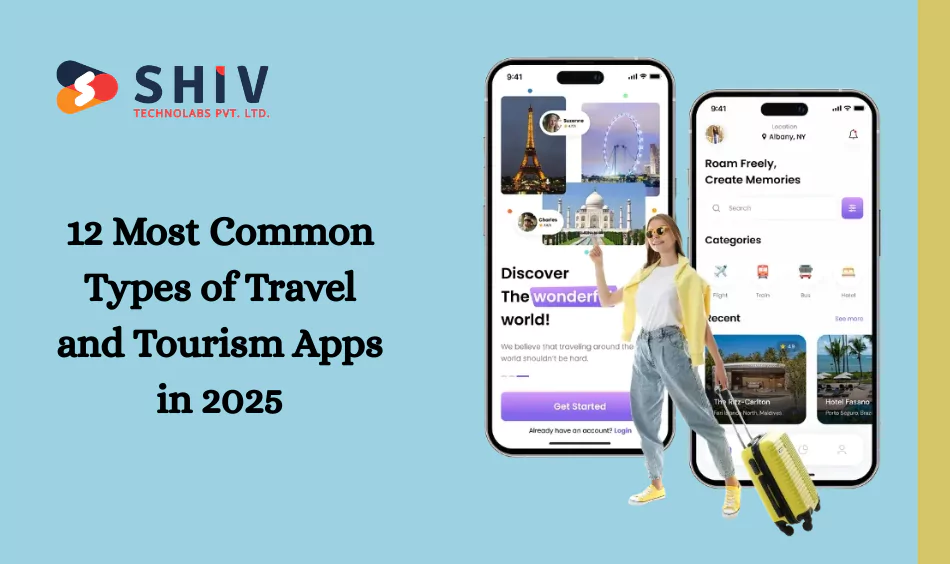
The travel app market continues to expand, with specialized tools catering to nearly every stage of a trip. Whether booking flights, managing expenses, or finding emergency help, today’s travelers rely on dedicated apps for every need. Here’s a breakdown of the most common travel and tourism app types in 2025:
1. Flight Booking Apps
These apps help users search, compare, and book flights quickly. They often include fare alerts, seat selection, and boarding pass storage. Examples: Skyscanner, Hopper.
2. Accommodation Booking Apps
Used to find and reserve hotels, hostels, and vacation rentals. Filters for location, pricing, and amenities improve user decisions. Examples: Airbnb, Booking.com.
3. Travel Itinerary Planning Apps
These apps organize bookings, schedules, and daily activities. Many sync with email to auto-import flight or hotel details. Great for keeping everything in one place. Examples: TripIt, Sygic Travel.
4. Transportation Apps
Help travelers move within cities or between locations. Include ride-sharing, public transport schedules, and bike or scooter rentals. Examples: Uber, Rome2Rio, Bolt.
5. Travel Guide and Exploration Apps
Provide information about local sights, attractions, and cultural spots. Some include audio tours, local insights, and trip ratings. Examples: Culture Trip, Rick Steves Audio Europe.
6.Language Translation Apps
Break language barriers by offering text, voice, and image translations. Useful for reading menus, signs, or communicating with locals. Examples: Google Translate, iTranslate.
7. Currency Conversion Apps
Help travelers understand exchange rates and make financial decisions on the go. Some offer offline access and fee calculators. Examples: XE Currency, Currency Converter Plus.
8. Travel Expense Tracking Apps
Track personal or group travel spending. Users can log expenses, categorize them, and split costs with others. Great for budget travel. Examples: Splitwise, Trail Wallet.
9. Packing Assistance Apps
Help users create packing lists based on trip duration, weather, and planned activities. Some apps include smart suggestions and reminders. Examples: PackPoint, Easy Pack.
10. Navigation and Maps Apps
Essential for finding routes, exploring areas, and locating attractions or services nearby. Offline map support is useful in remote areas. Examples: Google Maps, Maps.me.
11. Travel Journal and Blogging Apps
Let travelers document their journeys through text, photos, and videos. Ideal for sharing trips with friends or publishing travel blogs. Examples: Journi, Polarsteps.
12. Emergency Assistance Apps
These apps provide local emergency numbers, hospital locations, embassy details, and SOS features. Crucial for international travel. Examples: Smart Traveler, TripWhistle.
These app types reflect how modern travelers organize their trips, solve real problems, and stay informed on the go. When planning to build a travel booking app, understanding which category your app fits into will guide the design, features, and scope.
Also Read: Revolutionizing Travel Experiences: How Travel and Tourism App Development Is Shaping the Future?
Must-Have Features That Make a Travel App Work in 2025
A successful travel app solves real user problems with tools that are fast, reliable, and easy to use. Whether you’re building a travel booking app, travel planner, or a custom travel app solution, these features have become essential in 2025 for a better user experience, trust, and long-term retention.
Here are the features that matter most—and why they work:
- Quick Sign-Up and Social Login: Let users create accounts using email, phone, Google, or Apple ID. Social login reduces friction and speeds up onboarding.
- Smart Search with Real-Time Filters: Users expect a fast search that adapts to their input. Add filters for location, date, price range, ratings, and availability. Real-time updates help users make faster choices.
- Multi-Platform Booking Integration: Allow users to book flights, accommodations, transport, and activities from a single app. The more users that can handle in one place, the better the retention.
- AI-Based Travel Recommendations: Modern travel app features now include AI that suggests destinations, accommodations, or activities based on behavior, preferences, seasonality, or travel history. This is core to any AI-powered trip planner app development.
- Interactive Itinerary Builder: A visual, drag-and-drop travel planner app feature lets users organize daily plans, import bookings, and edit on the go. Integration with calendar apps adds value.
- In-App Payments with Multi-Currency Support: Support credit cards, digital wallets, and local payment systems. Auto-convert pricing based on the user’s location or preferred currency to reduce confusion.
- Push Notifications and Real-Time Alerts: Send timely updates about flight delays, hotel check-ins, local weather, or itinerary changes. Reminders help travelers stay on track without constantly checking the app.
- Offline Access to Key Information: Allow access to saved bookings, maps, itineraries, and travel documents even without internet. Especially valuable for international or remote travel.
- Geolocation and Map Integration: Users expect real-time navigation and recommendations nearby. Include directions, transit options, and the ability to bookmark or share locations.
- Built-In Language Translation and Currency Tools: Adding basic translation and currency conversion removes the need for third-party apps and improves convenience for international users.
- Secure Document Storage: Let users save boarding passes, hotel confirmations, and ID scans inside the app for quick access during check-ins or emergencies.
- 24/7 Chat or AI Support: Whether it’s a chatbot or live support, give users a way to get help instantly. Integrate help centers and travel FAQs for common issues.
- Review and Rating System: Let users rate hotels, attractions, and activities. Verified reviews build trust and help others make informed decisions.
- Personalized User Dashboard: Show upcoming trips, past bookings, loyalty points, saved places, and personal tips. This gives users a reason to return and reuse the app.
These are not just feature ideas—they’re proven elements that improve usability and drive engagement. Whether you’re working on a custom travel app solution or an on-demand travel app, including these will make your product more reliable, scalable, and user-friendly.
How to Build a Travel App in 2025: Step-by-Step Development Process That Works
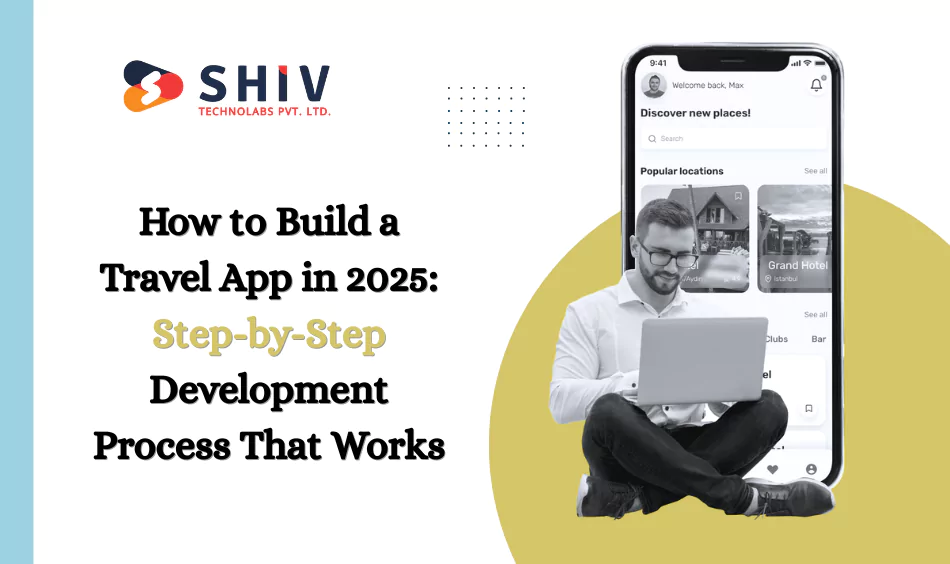
Building a travel app today involves more than coding. It requires market understanding, user-focused design, the right tech stack, and smart feature planning. Whether you’re creating a travel booking app, following the right process improves your chances of launching a successful product. Here’s a detailed breakdown of each step in the app development process:
Step 1: Define the Purpose and Target Audience
Before writing a single line of code, clarify your app’s core purpose. Who is it for? What problems does it solve?
For example:
- A solo traveler may need an itinerary planner and safety tools.
- A family user might look for accommodation options and kid-friendly activities.
- Business travelers often need fast bookings, expense tracking, and support features.
A clear understanding of your audience helps shape every design and feature decision later in the process.
Step 2: Choose the Right Type of Travel App
Your app must fit into one or more categories based on its functionality. Common types include:
- Flight booking apps for airline reservations
- Accommodation booking apps for hotel stays
- Travel itinerary planning apps for organizing trips
- Navigation and maps apps for real-time location tracking
- On-demand travel apps that offer services like rides, guides, or last-minute deals
Choosing the right app type helps focus your feature list, design, and development efforts.
Step 3: Research the Market and Competitors
Analyze the top players in your space. What do they do well? Where do they fall short? Use this data to identify gaps and opportunities.
Look into:
- User reviews
- App store ratings
- Feature comparisons
- Business models (ads, commissions, in-app purchases)
This research also helps with positioning and pricing your app.
Step 4: Define Core Features and Build a Feature List
Now that you know your audience and competitors, list the essential features that your app needs. Include each of the above-given features for your travel app.
Step 5: Plan the UI/UX and Create Wireframes
User experience can make or break a travel app. Create wireframes that show how users will move through the app—searching, booking, checking trip details, etc.
Design principles to follow:
- Keep screens simple and focused
- Limit the number of taps needed to complete a task
- Use visual hierarchy to guide attention
- Make buttons and forms thumb-friendly for mobile devices
Wireframes give your development team a visual plan for building the interface.
Also Read: Top 10 Key Elements for Effective UI/UX Design in Mobile Apps
Step 6: Choose the Technology Stack
Your technology decisions should support your goals and budget. The right stack helps your app run smoothly and scale over time. The common technology stack includes:
- Frontend: Flutter or React Native (cross-platform), Swift (iOS), Kotlin (Android)
- Backend: Node.js, Django, or Laravel
- Database: Firebase, PostgreSQL, or MongoDB
- APIs: Amadeus for travel data, Google Maps for location, OpenWeather for weather forecasts
- Payments: Stripe, Razorpay, or PayPal
- AI Tools: TensorFlow or custom models for AI-powered trip planner app development
Choose a stack that matches your app’s complexity, performance needs, and future upgrade plans.
Step 7: Develop the App (Frontend + Backend)
Break your app into smaller modules and build one feature at a time. Use Agile development with two-week sprints for better progress tracking and flexibility.
Development includes:
- Building the user interface
- Creating backend services for data storage, payments, bookings, etc.
- Connecting APIs to fetch live flight, hotel, and location data
- Adding security protocols for user data and payments
Focus on performance, scalability, and smooth interaction between app components.
Step 8: Test the App Thoroughly
Testing must cover every scenario your users might face. Key areas to test:
- Functionality: Do all features work as expected?
- Compatibility: Does the app work on different devices and screen sizes?
- Speed and performance: Are loading times fast?
- Offline usage: Can users access critical info without internet?
- Security: Are login and payment processes safe?
Testing tools like BrowserStack, Firebase Test Lab, and TestFlight help cover both manual and automated tests.
Step 9: Prepare for Launch
Before launch, prepare your app store assets:
- App icon and name
- Screenshots and demo video
- App description with keywords
- Privacy policy and contact information
- Category and tags for search visibility
Also, test your app through beta testers to get feedback on design and performance. Fix bugs before going live.
Step 10: Launch the App and Monitor Performance
Publish your app on Google Play and the Apple App Store. Use tools like Firebase Analytics or Mixpanel to monitor:
- Downloads and uninstalls
- User activity and time spent in the app
- Drop-off points or common issues
- Most-used features
Collect reviews and ratings to improve credibility and attract more users.
Also Read: How to Launch an Android App to Google Play Store
Step 11: Maintain and Improve the App
The job doesn’t end at launch. Plan ongoing updates to:
- Add new features
- Fix bugs
- Improve speed
- Adapt to user feedback
- Support OS updates
Keep an update schedule so your app stays relevant and competitive.
These steps offer a practical guide on how to build a travel app that works in 2025. Following this process sets you up for long-term growth and user satisfaction.
How Much Does It Cost to Build a Travel App in 2025?
The cost to develop a travel app in 2025 depends on many variables, such as the type of app, feature list, platform choice, team structure, and level of customization. Here’s a detailed table that outlines the average cost range for different types of travel and tourism apps.
# Cost Breakdown Based on Types
| App Type | Key Features | Estimated Cost | Development Time |
|---|---|---|---|
| Basic Travel Planner App | Trip scheduling, calendar sync, and itinerary storage | $15,000 – $25,000 | 2 – 3 months |
| Flight Booking App | Search engine, real-time prices, ticket booking, payment gateway | $25,000 – $40,000 | 3 – 4 months |
| Hotel & Accommodation Booking App | Listings, filters, in-app booking, guest reviews, payment support | $30,000 – $50,000 | 3 – 5 months |
| On-Demand Travel Services App | Ride bookings, activity reservations, push alerts, live tracking | $35,000 – $55,000 | 4 – 5 months |
| All-in-One Travel Super App | Flights, hotels, itinerary planner, maps, user profile, loyalty integration | $60,000 – $120,000 | 5 – 8 months |
| AI-Powered Trip Planner App | Smart suggestions, behavior-based recommendations, and machine learning integration | $80,000 – $150,000 | 6 – 9 months |
| Custom Enterprise Travel App | Role-based access, multi-user dashboard, CRM tools, corporate policy compliance | $100,000+ | 6+ months |
# Additional Cost Factors to Consider in Building a Travel App
| Cost Component | Price Range | Description |
|---|---|---|
| UI/UX Design | $3,000 – $15,000 | Custom app screens, branding, and user flow design |
| API Integration (Maps, Flights) | $2,000 – $10,000 | Connecting third-party services like Amadeus, Google Maps, and OpenWeather |
| QA and Testing | $3,000 – $10,000 | Multi-device testing, bug fixing, and performance testing |
| Backend Development | $5,000 – $20,000 | Server-side logic, user data storage, bookings, payment handling |
| Maintenance & Updates (Yearly) | 15–20% of dev cost | Regular bug fixes, feature updates, and platform support |
What Affects the Final Travel App Cost?
- Platform: Developing a mobile app for both Android and iOS costs more than single-platform apps.
- Feature Complexity: More features = more dev time and cost.
- Location of Development Team: Rates vary by region (e.g., US vs. Eastern Europe vs. Asia).
- Third-Party Services: APIs, payment gateways, and real-time booking engines may have setup or monthly fees.
- Post-Launch Support: Continuous updates and server hosting are ongoing costs often overlooked.
Also Read: Build a Travel Website from Scratch: A Beginner’s Guide
Build Your Travel App with Shiv Technolabs: From Idea to Launch
If you’re planning to build a custom travel app or travel website, Shiv Technolabs offers full-cycle development services built for performance, reliability, and scalability. From early-stage strategy to launch and ongoing support, the team covers every technical and functional layer of modern travel software. Whether you’re a startup or an established travel brand, we offer:
- Custom App Development: Flight booking, itinerary planning, on-demand travel services, and more.
- Smart UI/UX Design: Mobile-first, user-friendly layouts that boost engagement.
- API Integrations: Real-time flight data, hotel availability, maps, and currency tools.
- AI-Based Trip Planning: Smart recommendations, auto-itinerary builders, and personalization.
- Web + Mobile Solutions: Full-stack development for apps, websites, and portals.
- Ongoing Support: Maintenance, updates, and security management post-launch.
Whether you’re a travel agency, startup, or an enterprise aiming to expand your digital reach, Shiv Technolabs can help you build a travel app that’s ready for the future.
Final Thoughts
Travel app development continues to evolve, with users expecting fast, reliable, and user-friendly tools. From planning to bookings, a well-built app can manage the entire travel experience. Whether you’re building a travel booking app, an on-demand travel solution, or a custom travel platform, success starts with the right features, clear goals, and a solid tech partner.
If you’re planning to build a travel app or website, Shiv Technolabs offers expert travel development services to bring your idea to life, designed for real users and real-world results.
🔗 Start your travel app project with Shiv Technolabs. Reach out to us now!








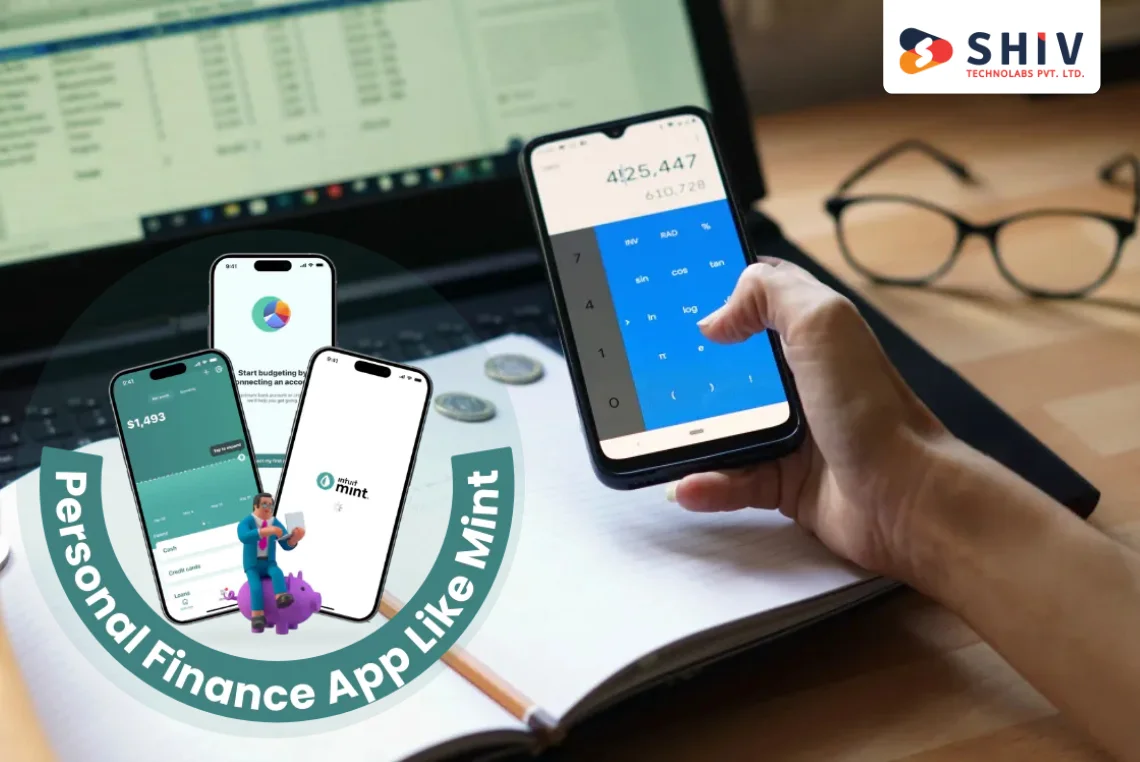
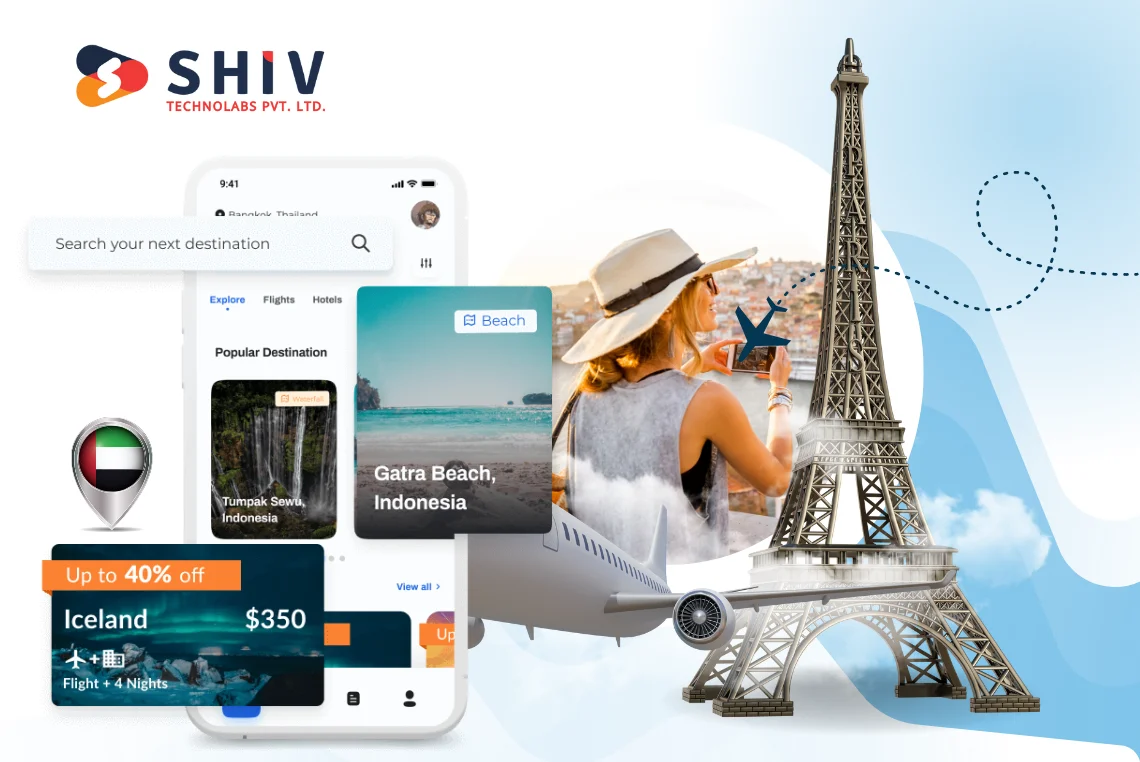
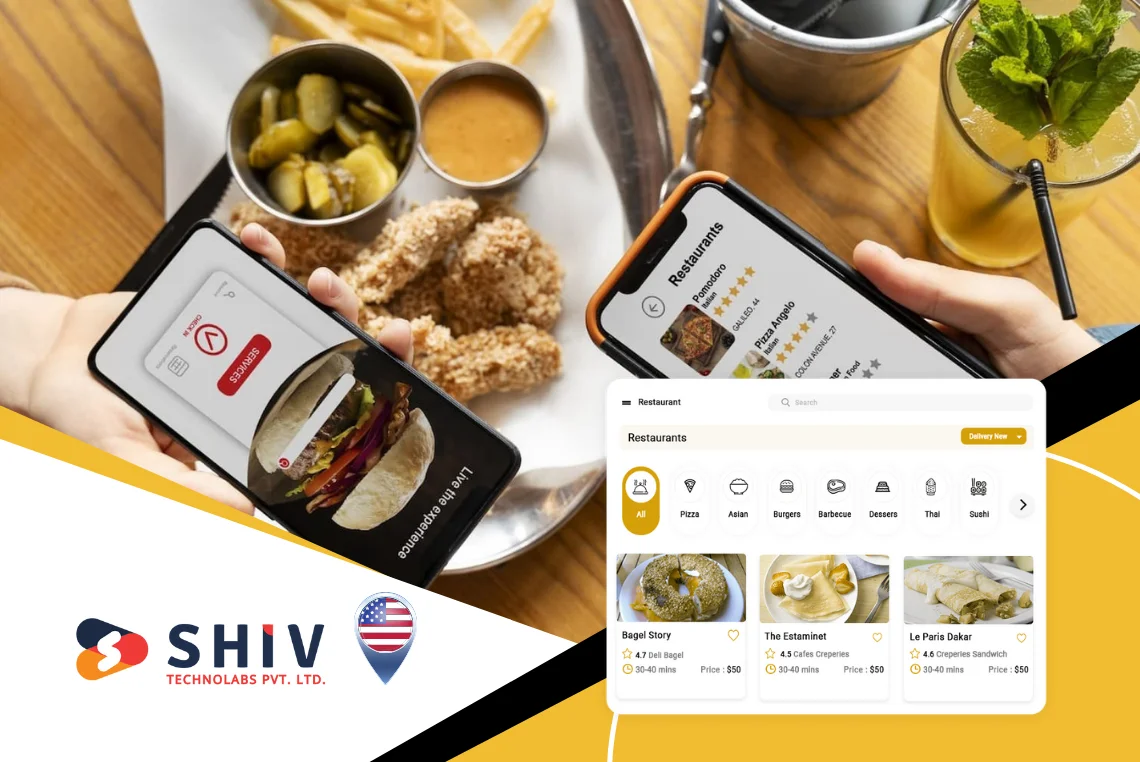
![Popular Tech Stacks Used in Mobile Apps [Industry-wise Bifurcation]](https://shivlab.com/wp-content/uploads/2025/09/Popular-Tech-Stacks-Used-in-Mobile-Apps-Industry-wise-Bifurcation.webp)













